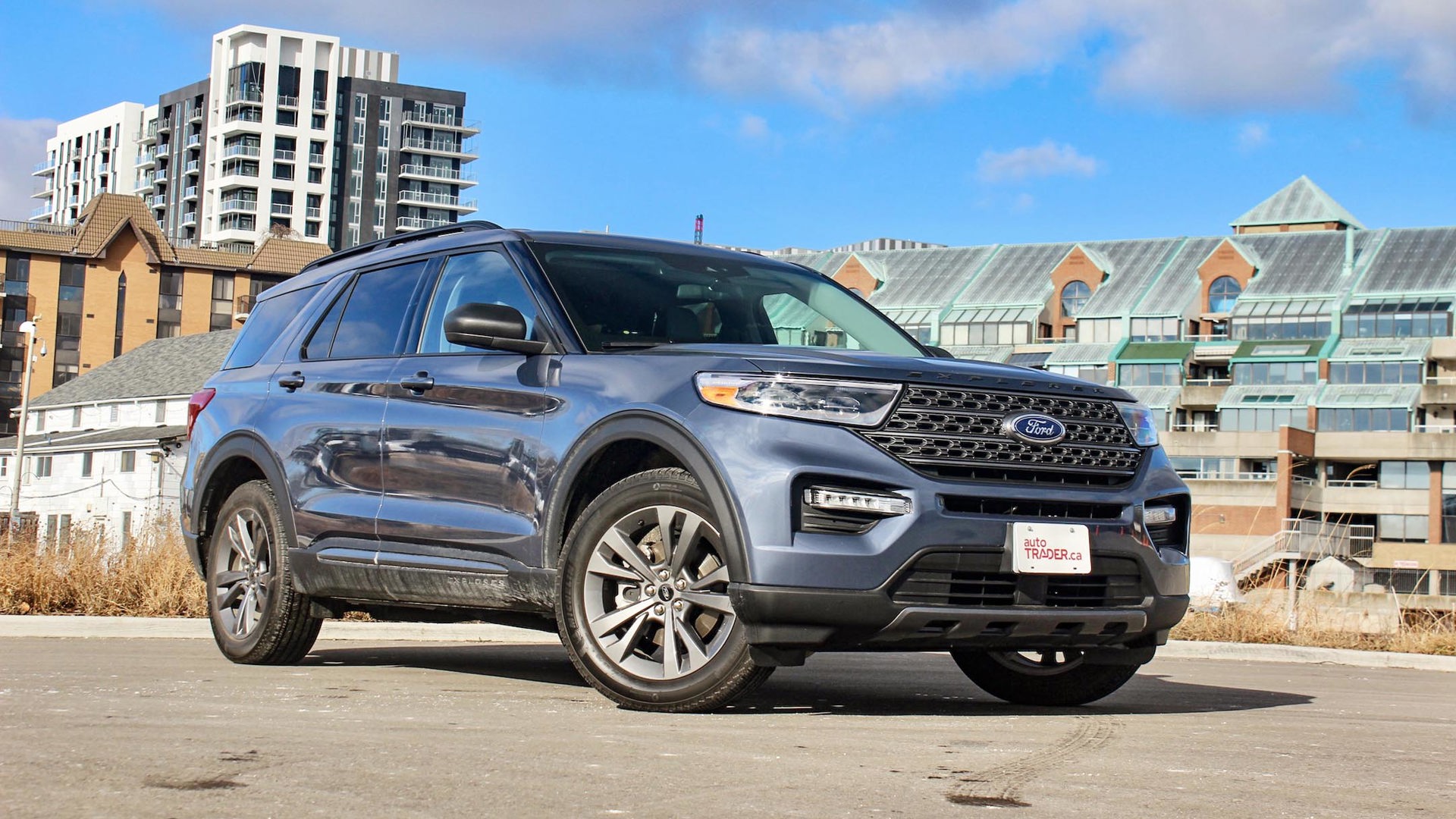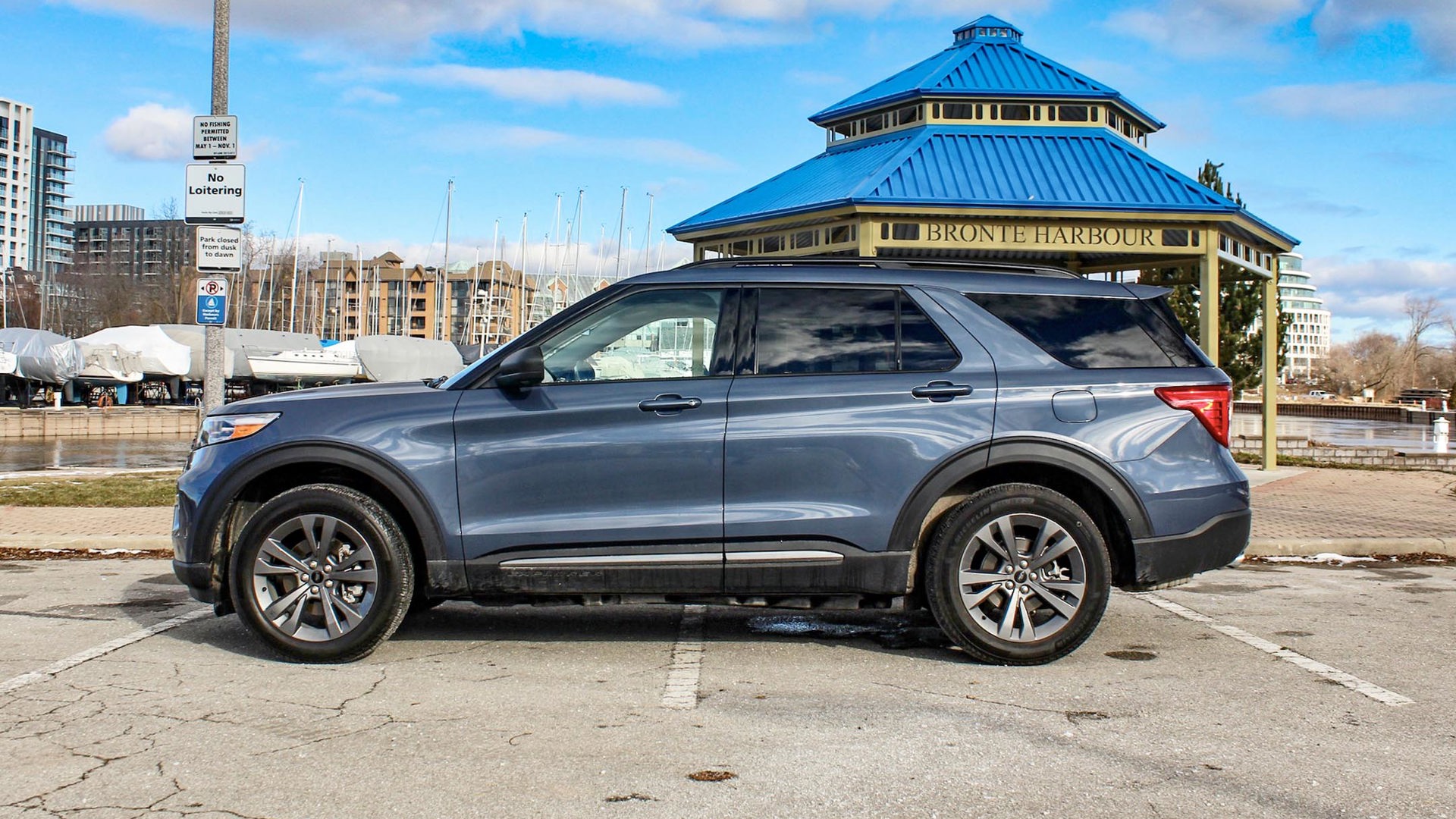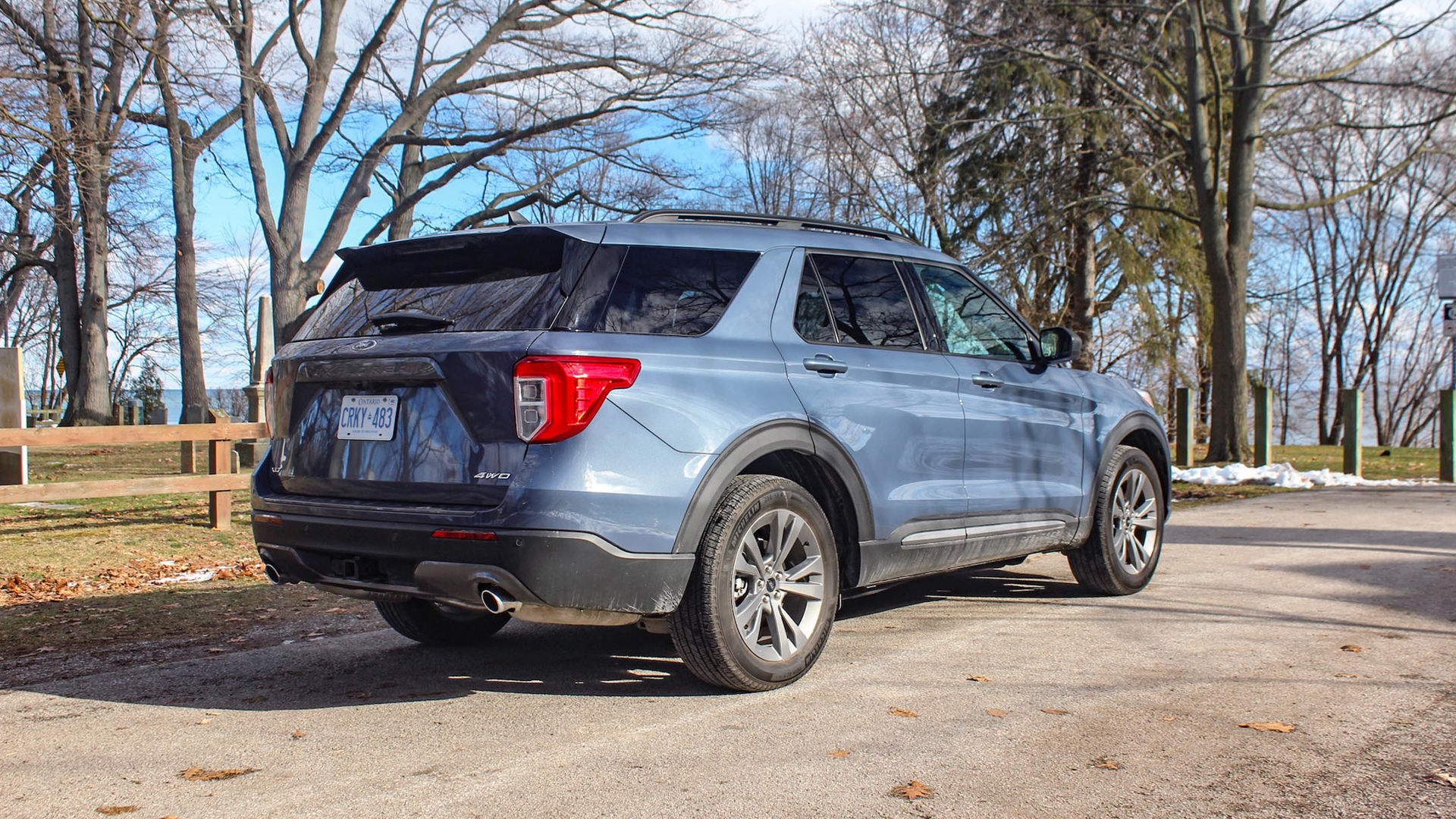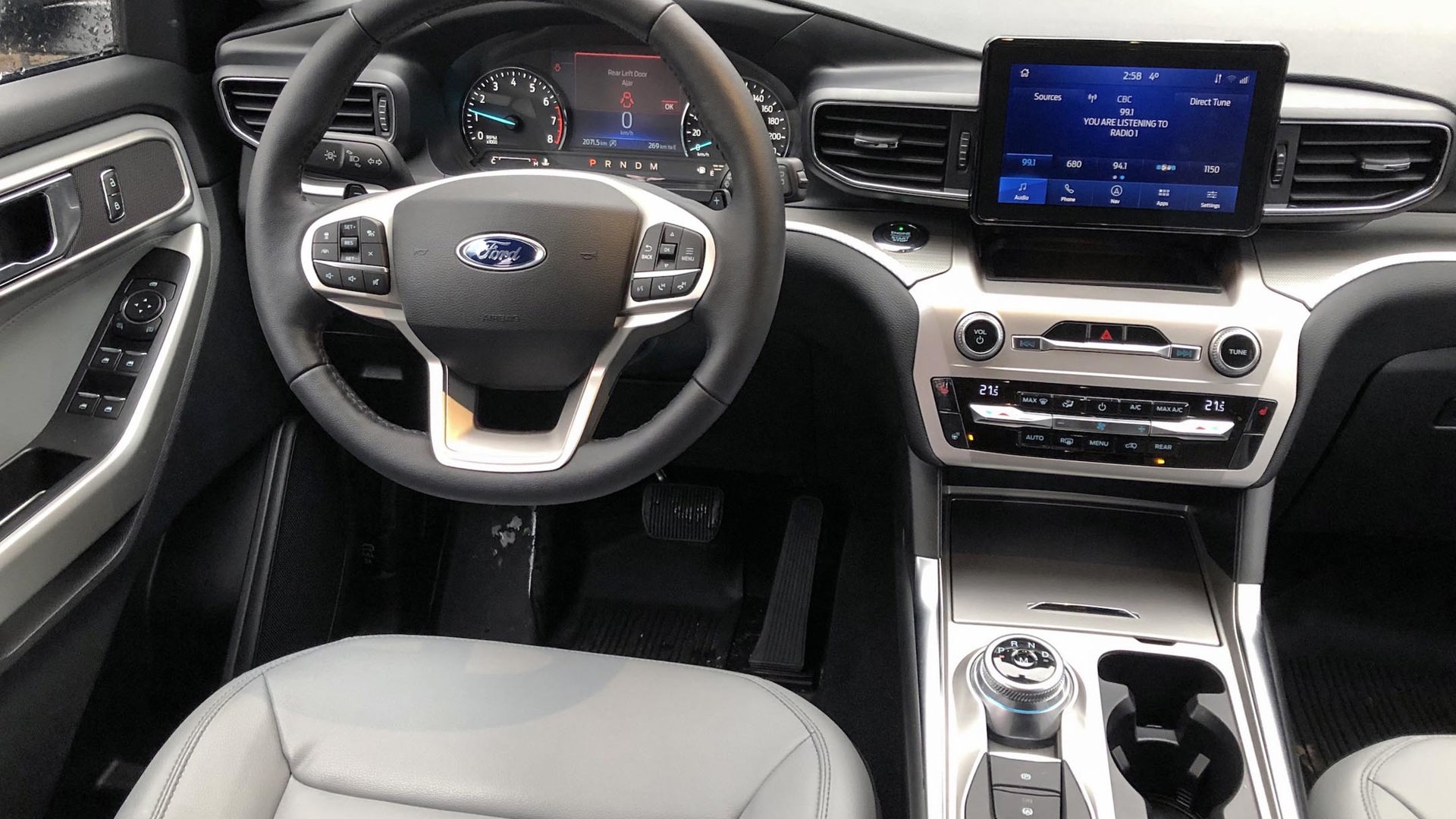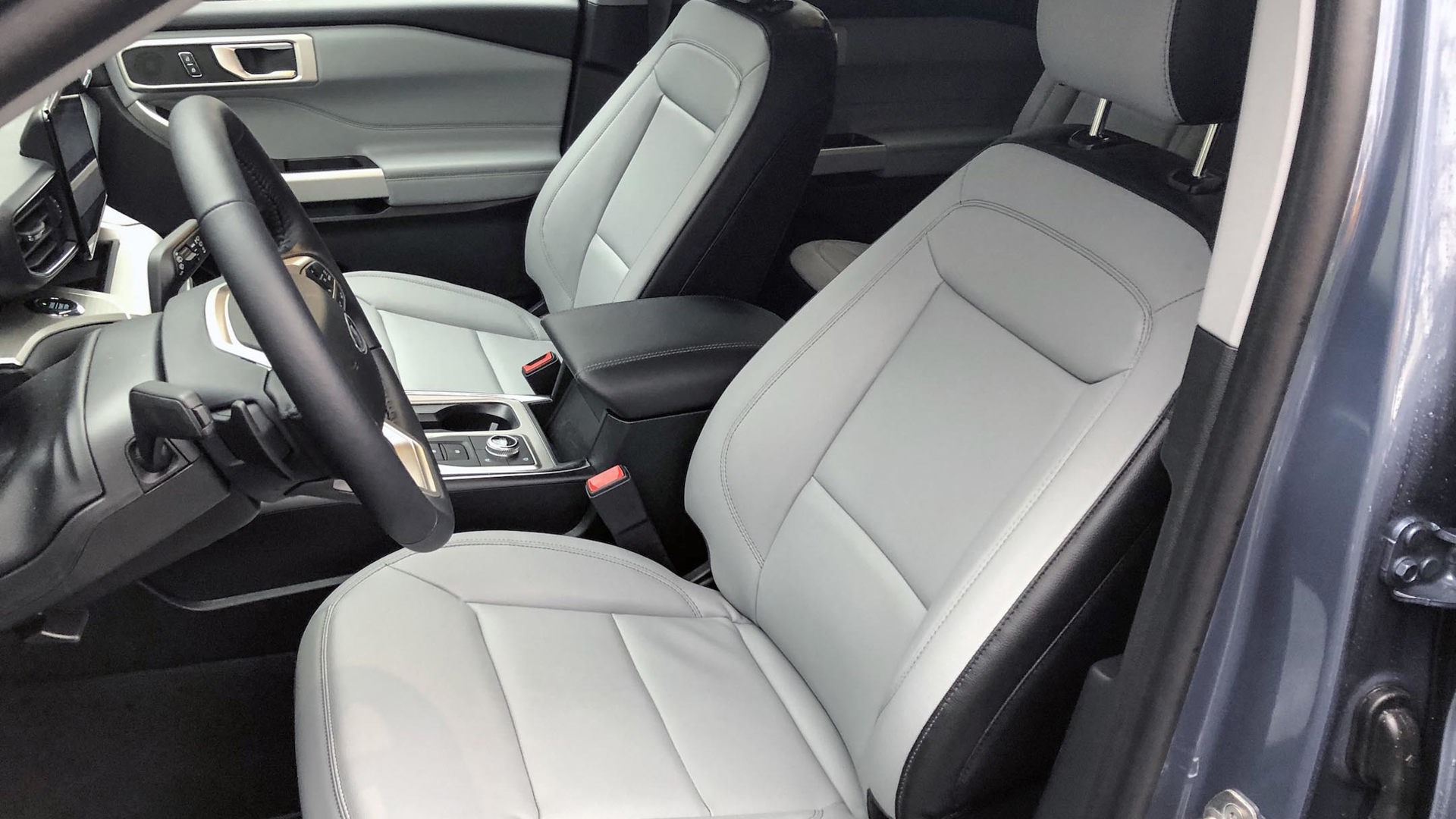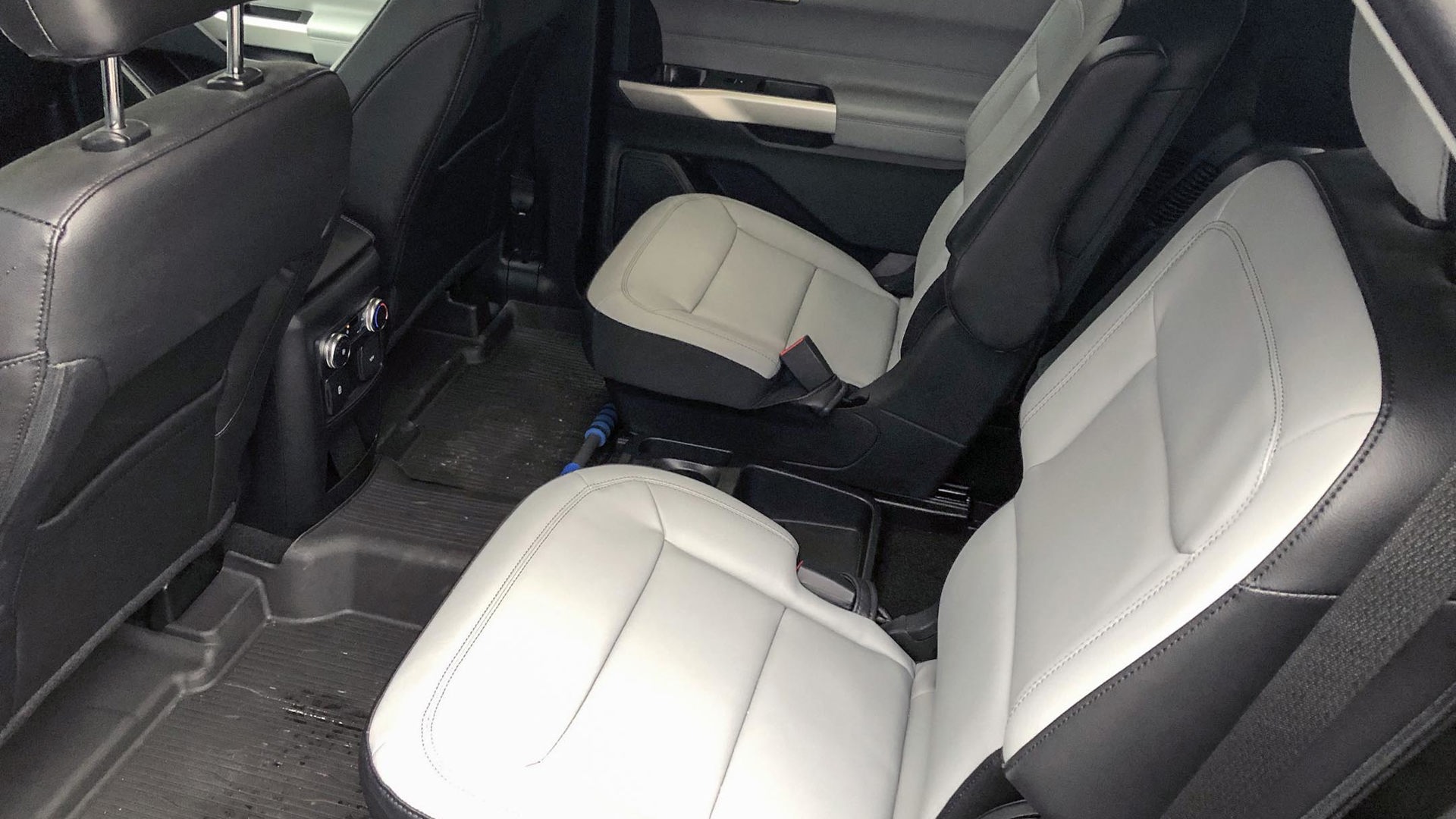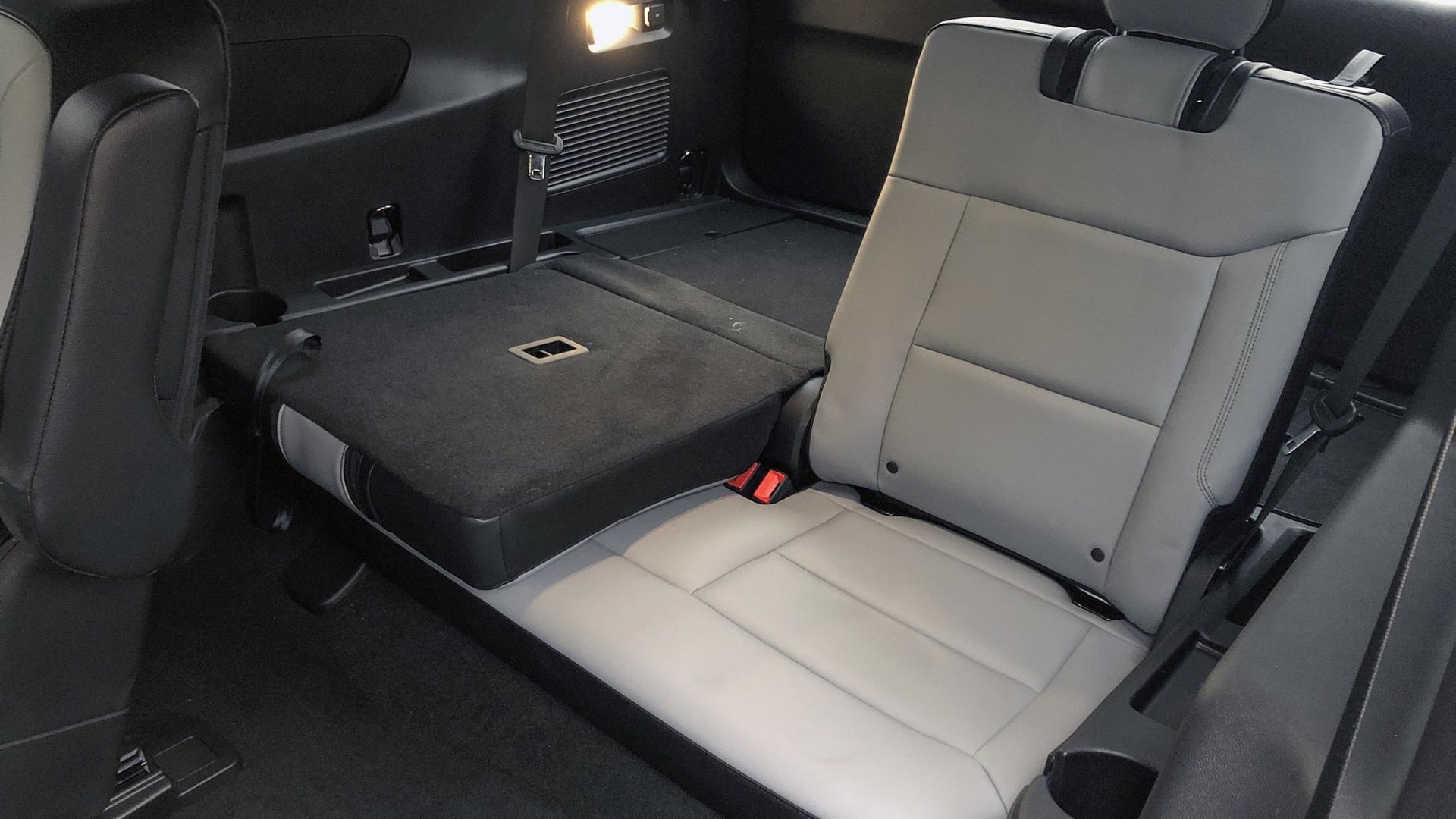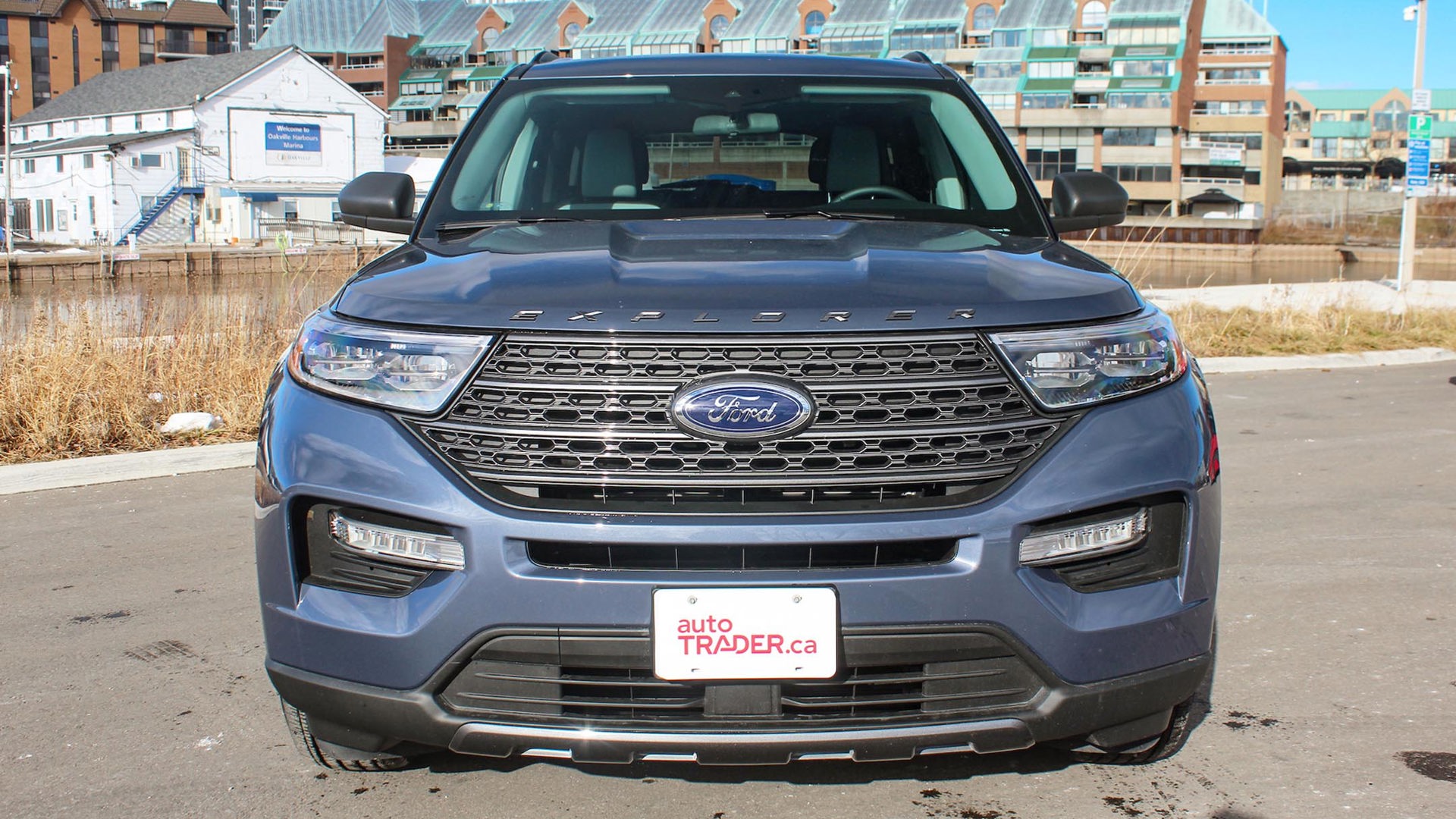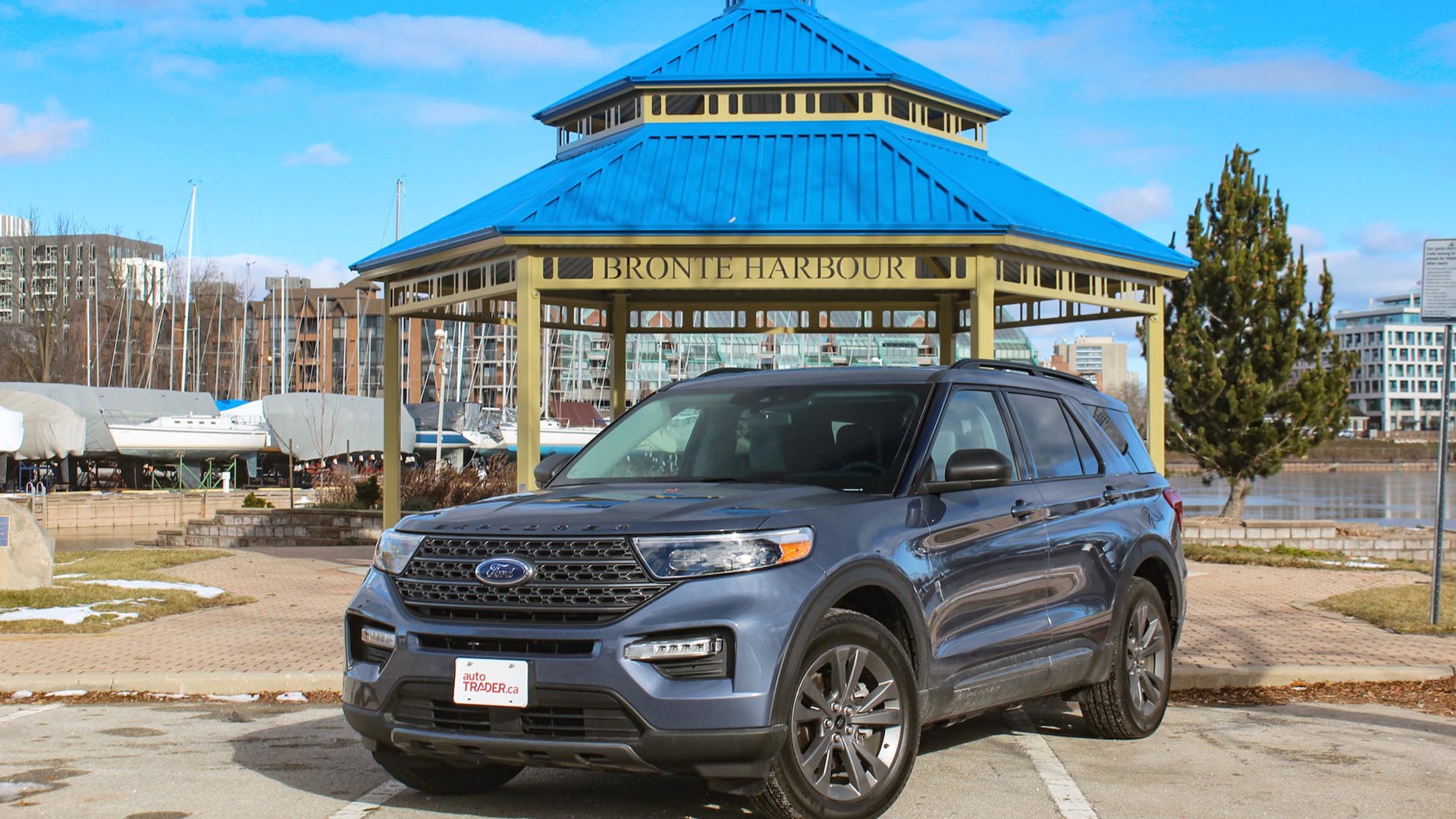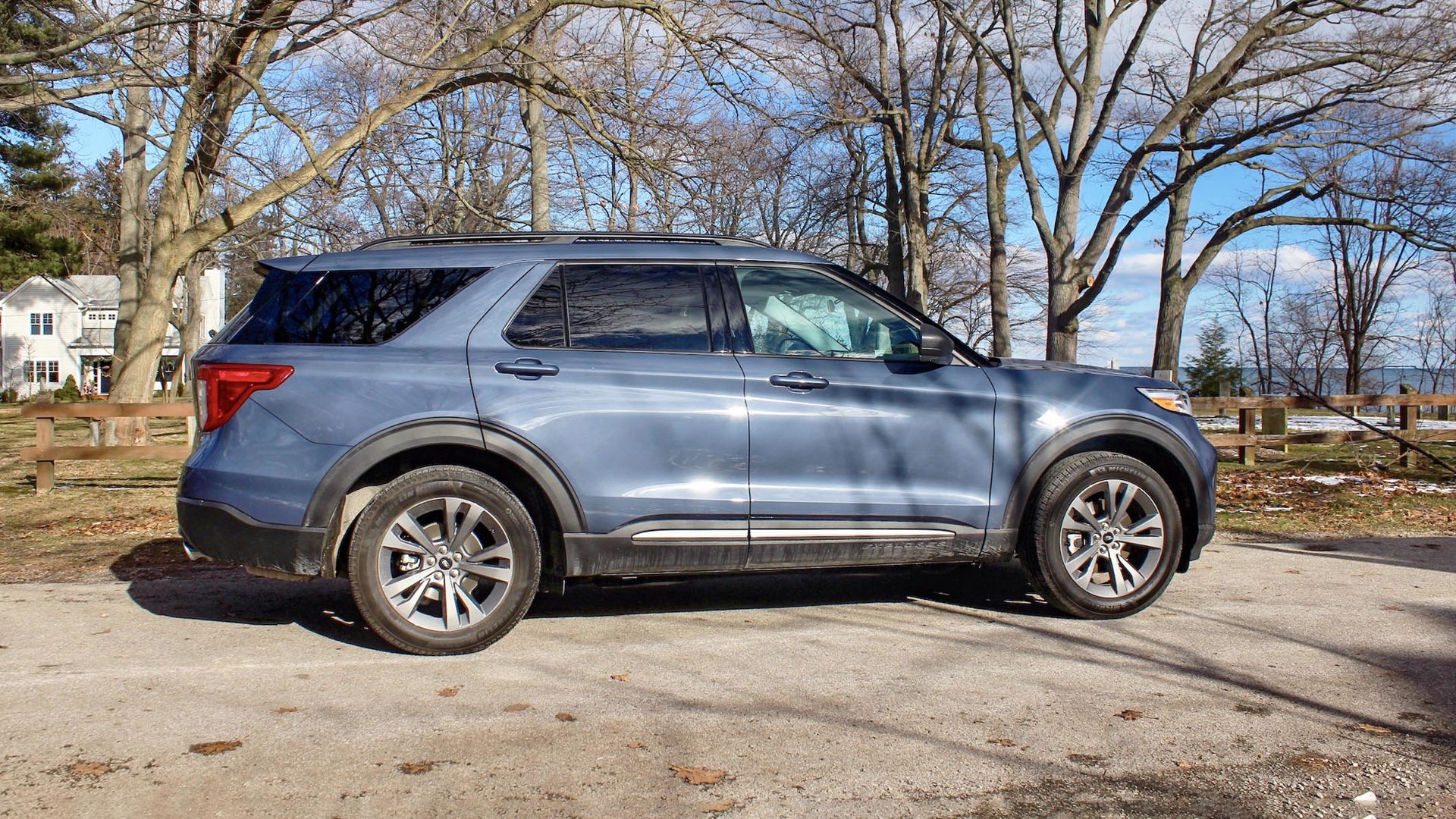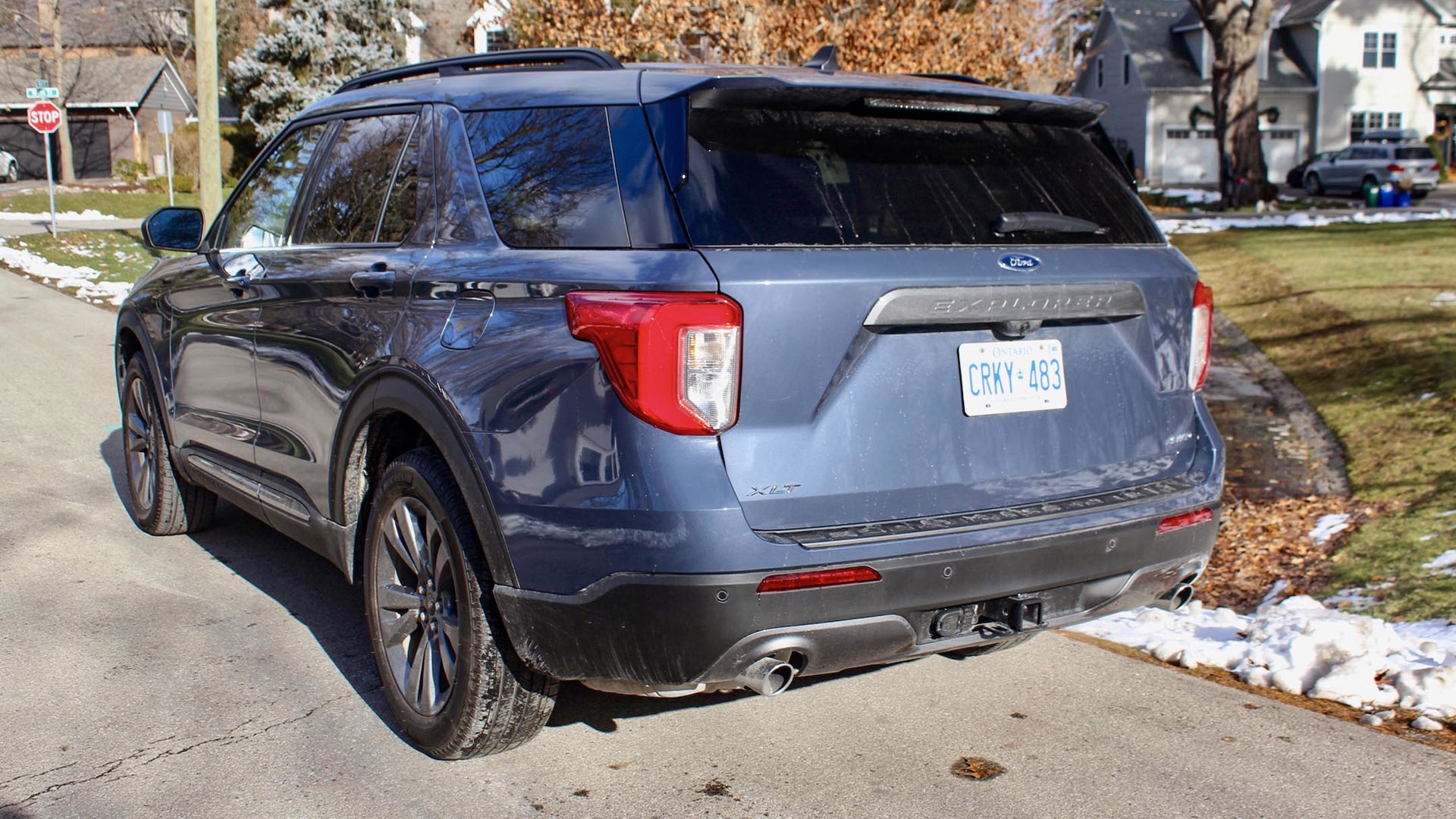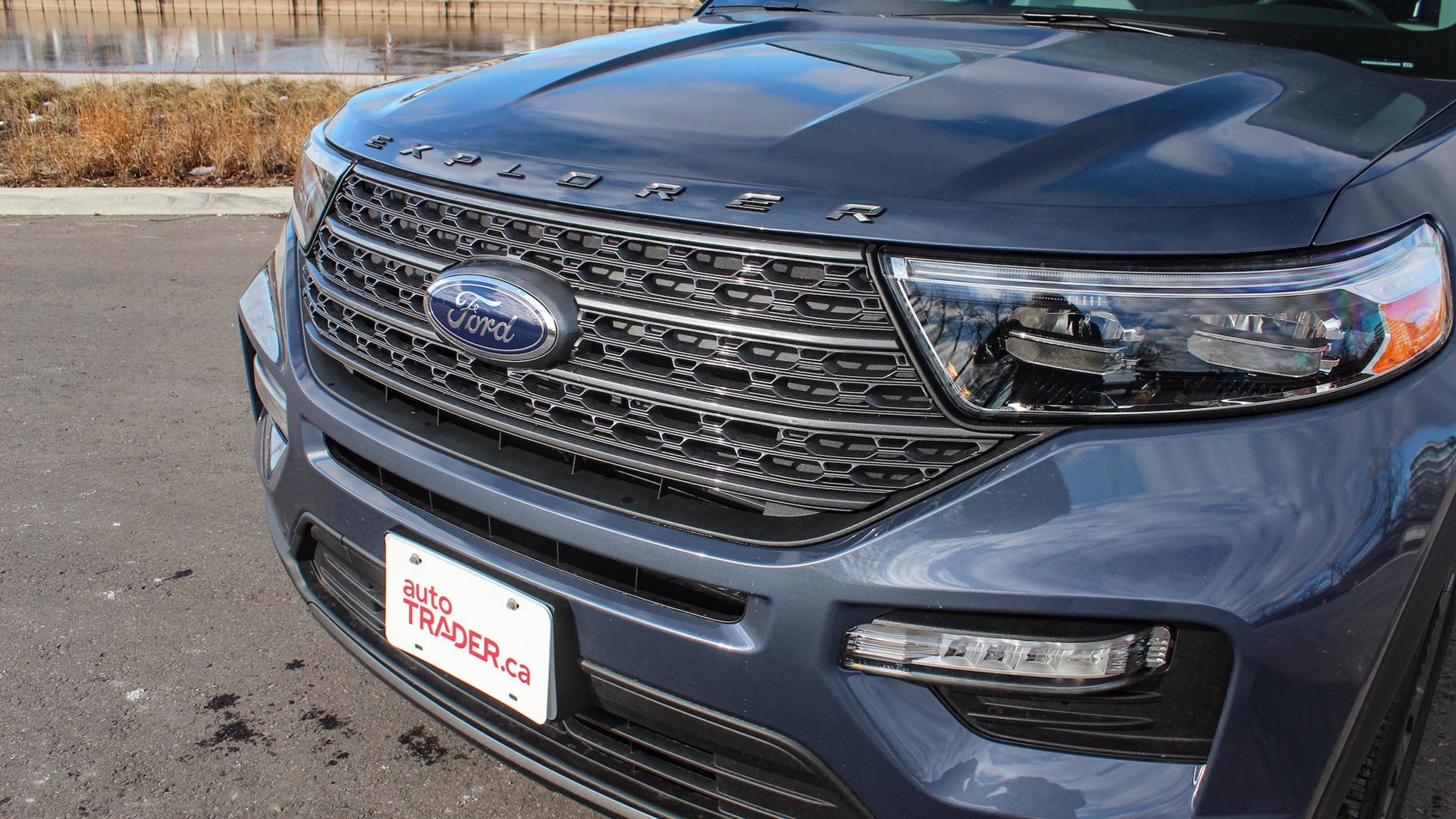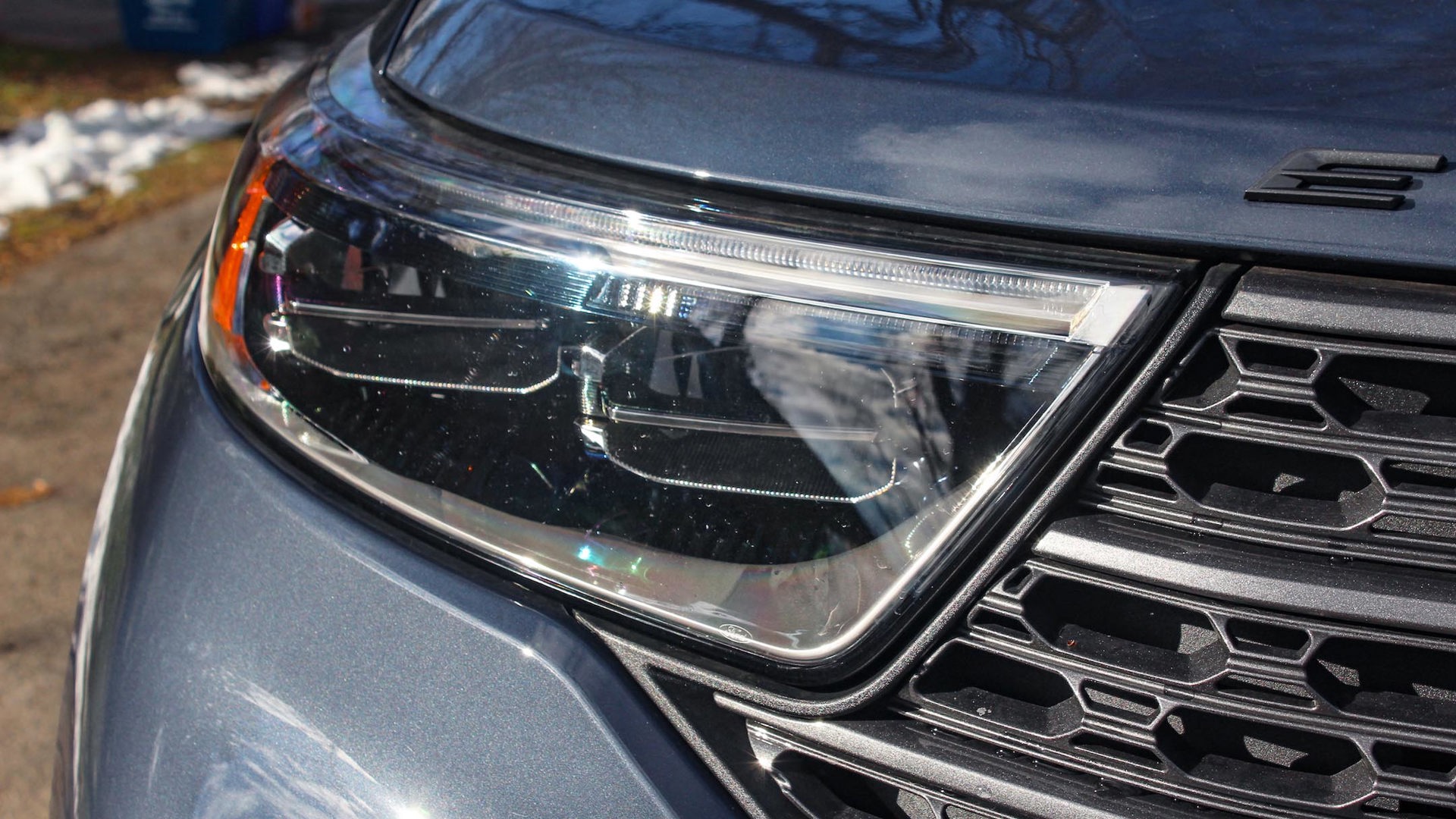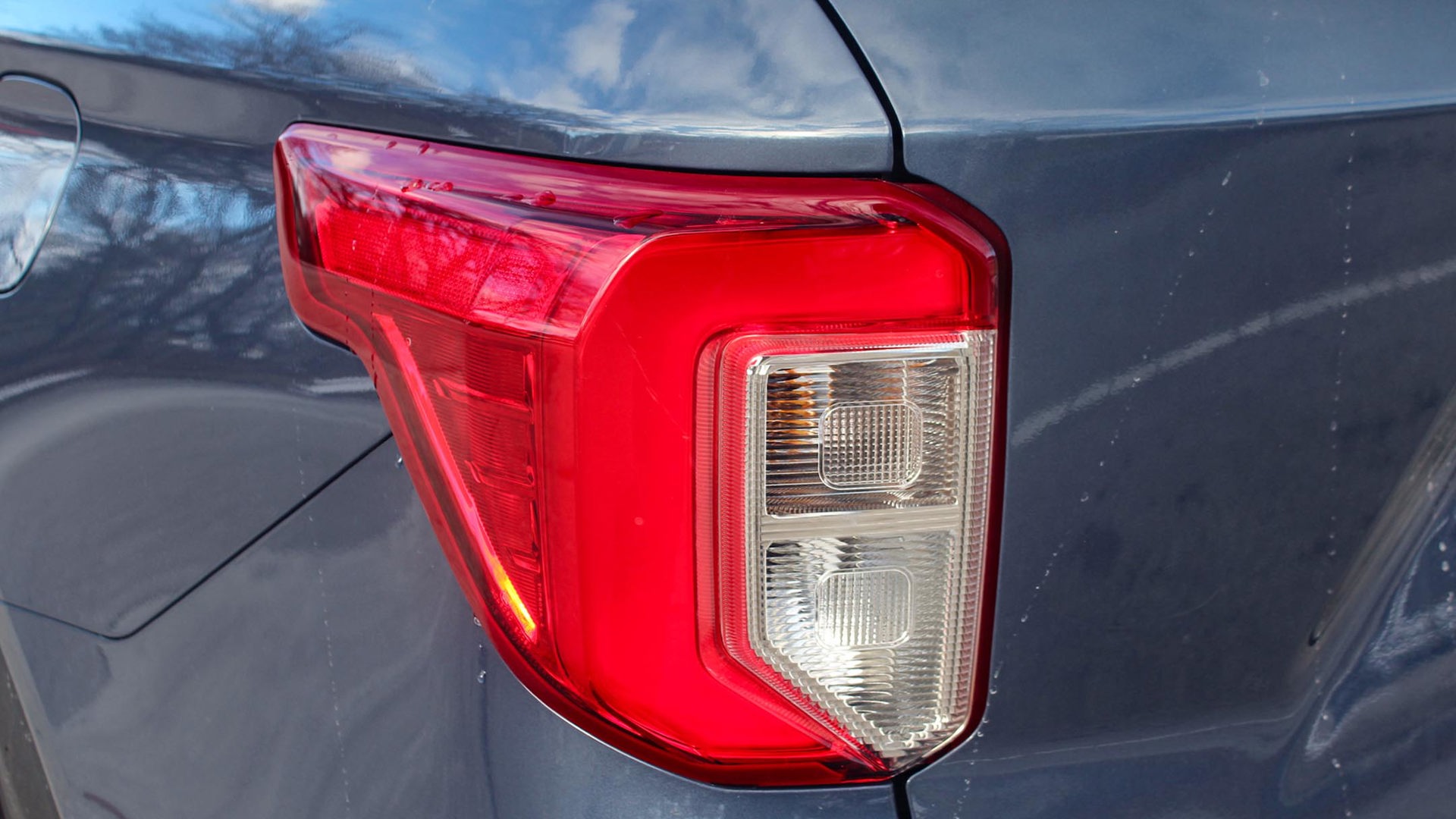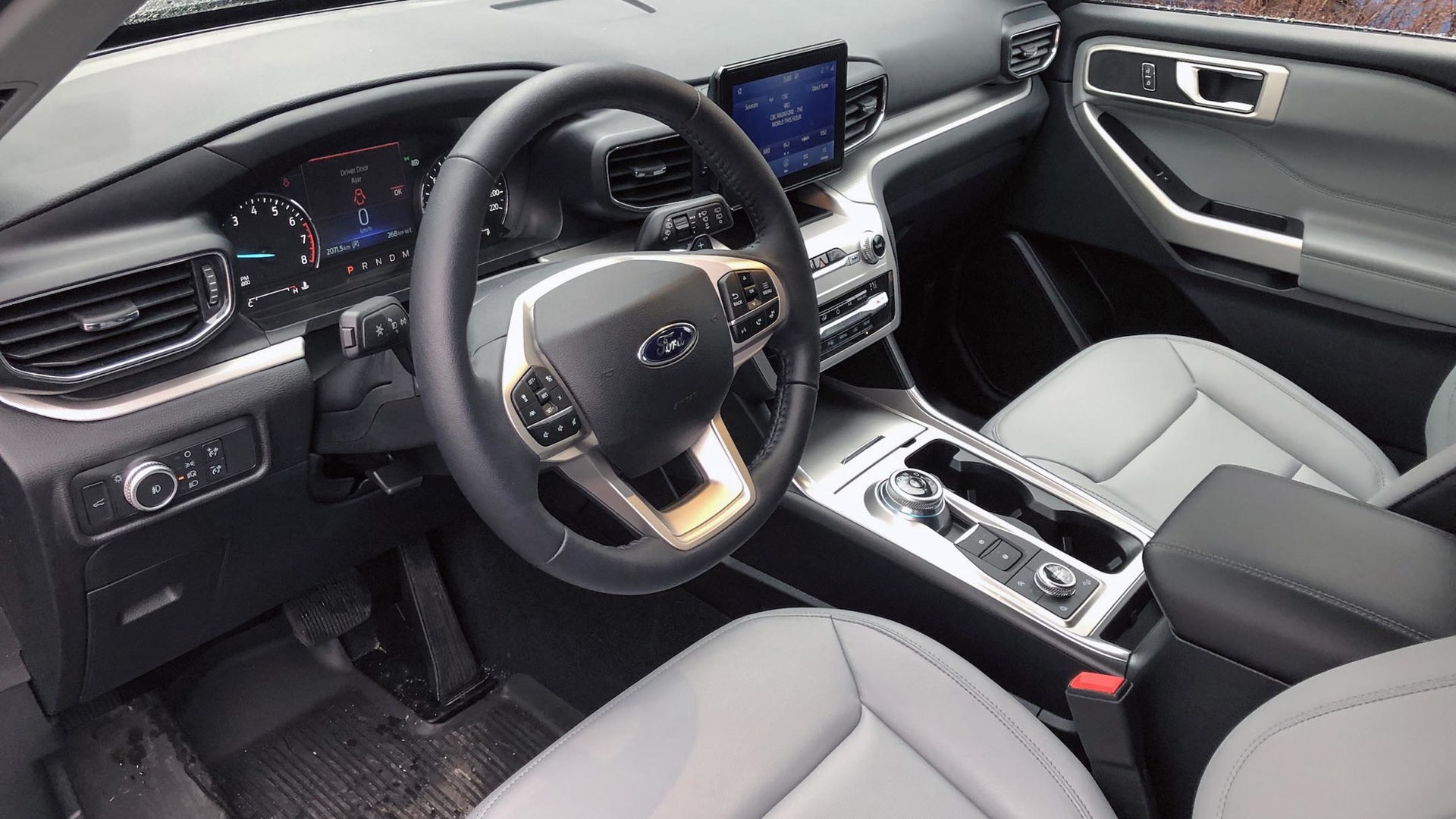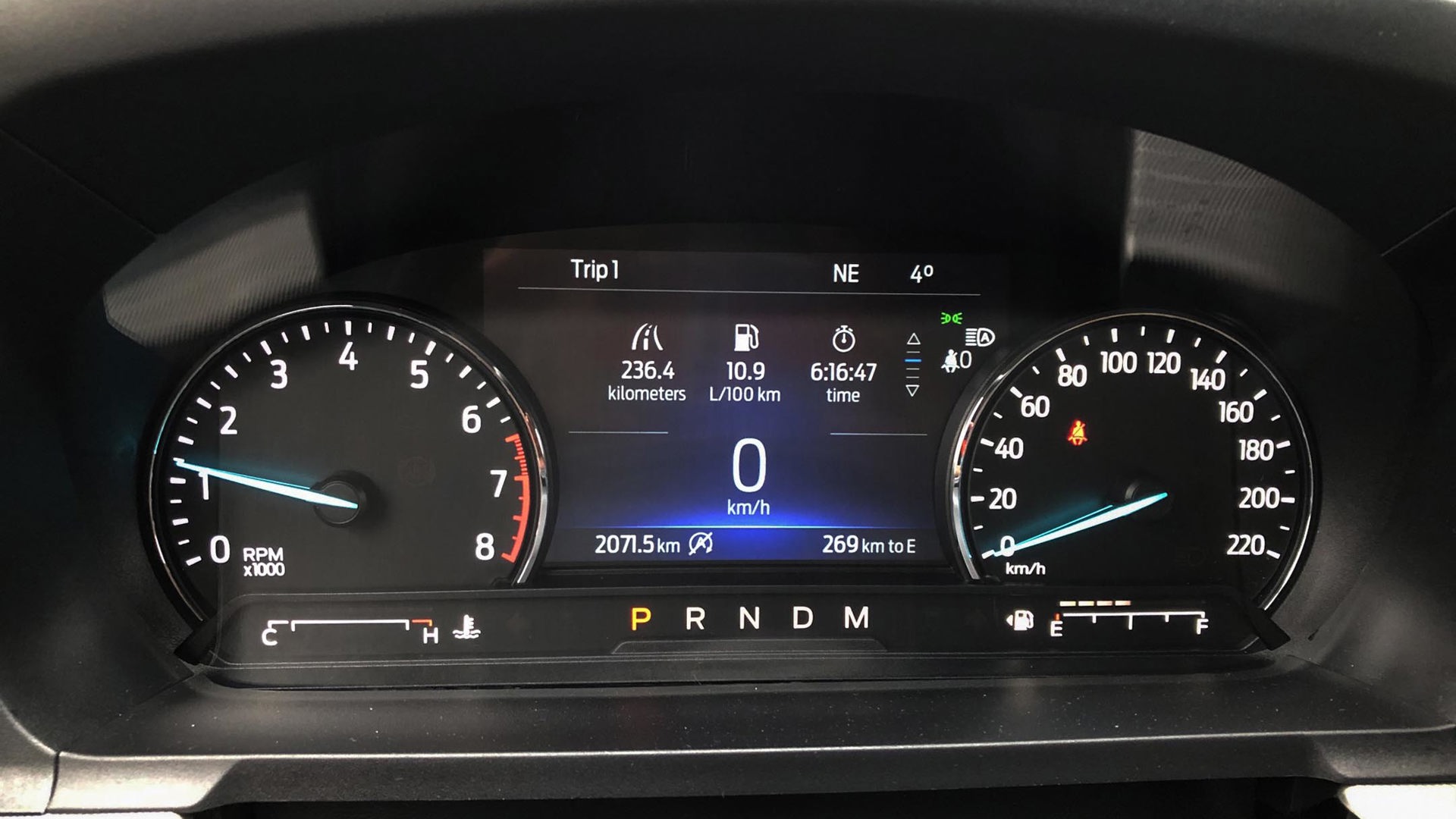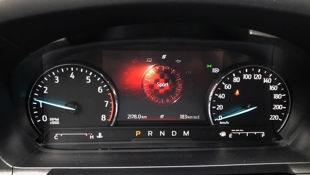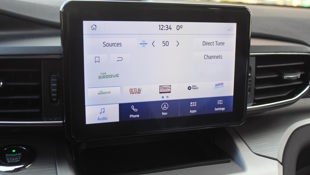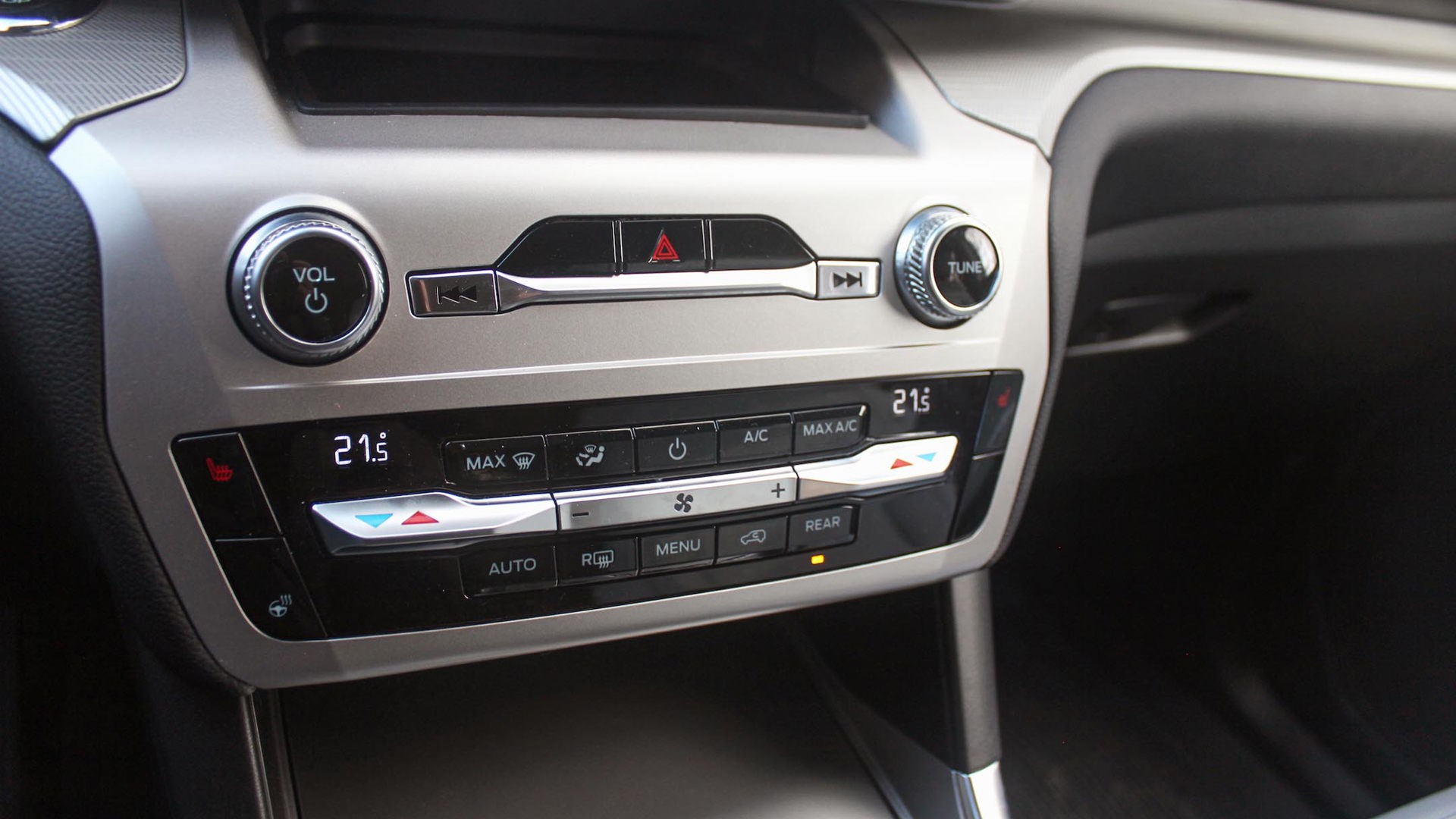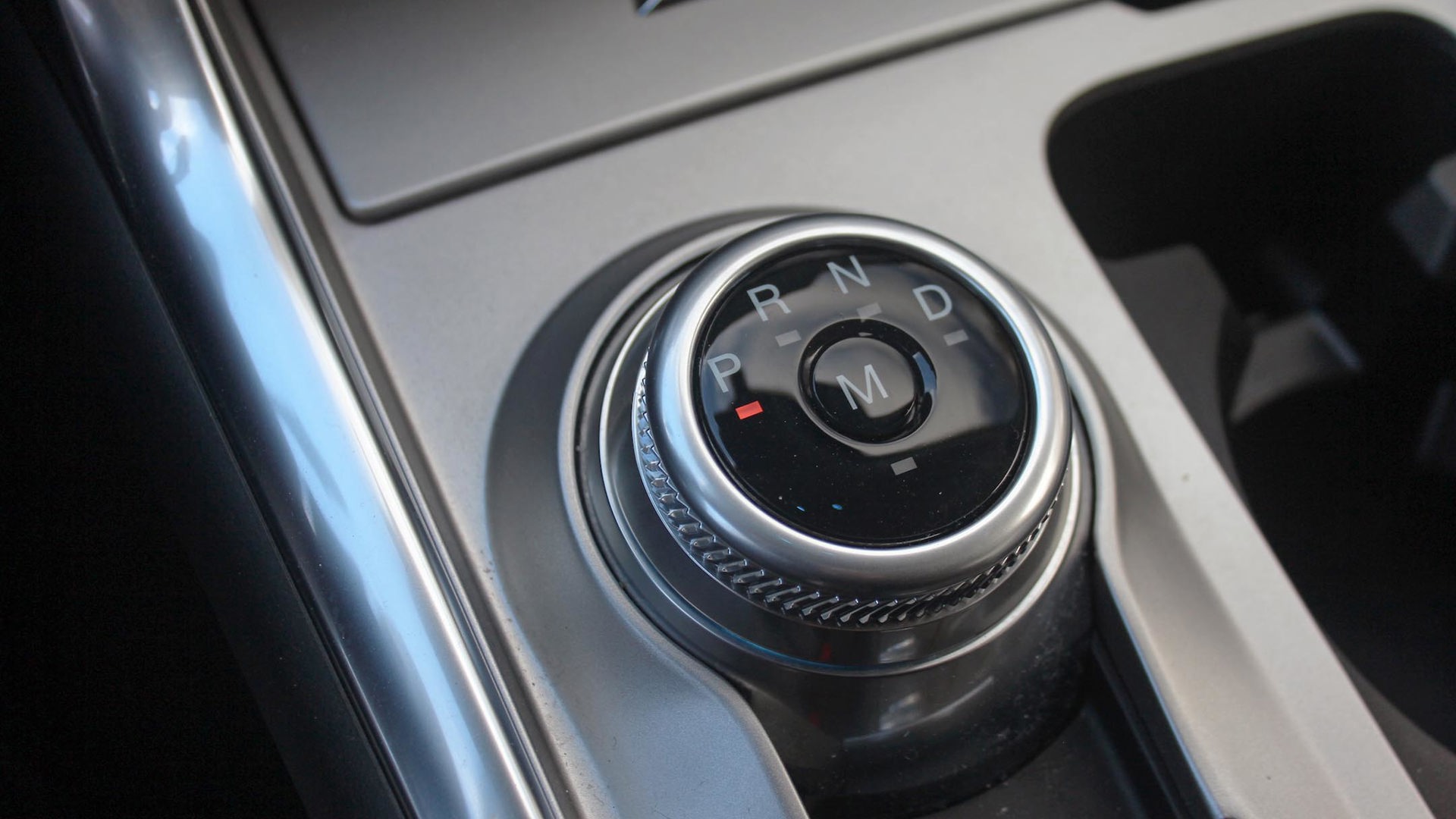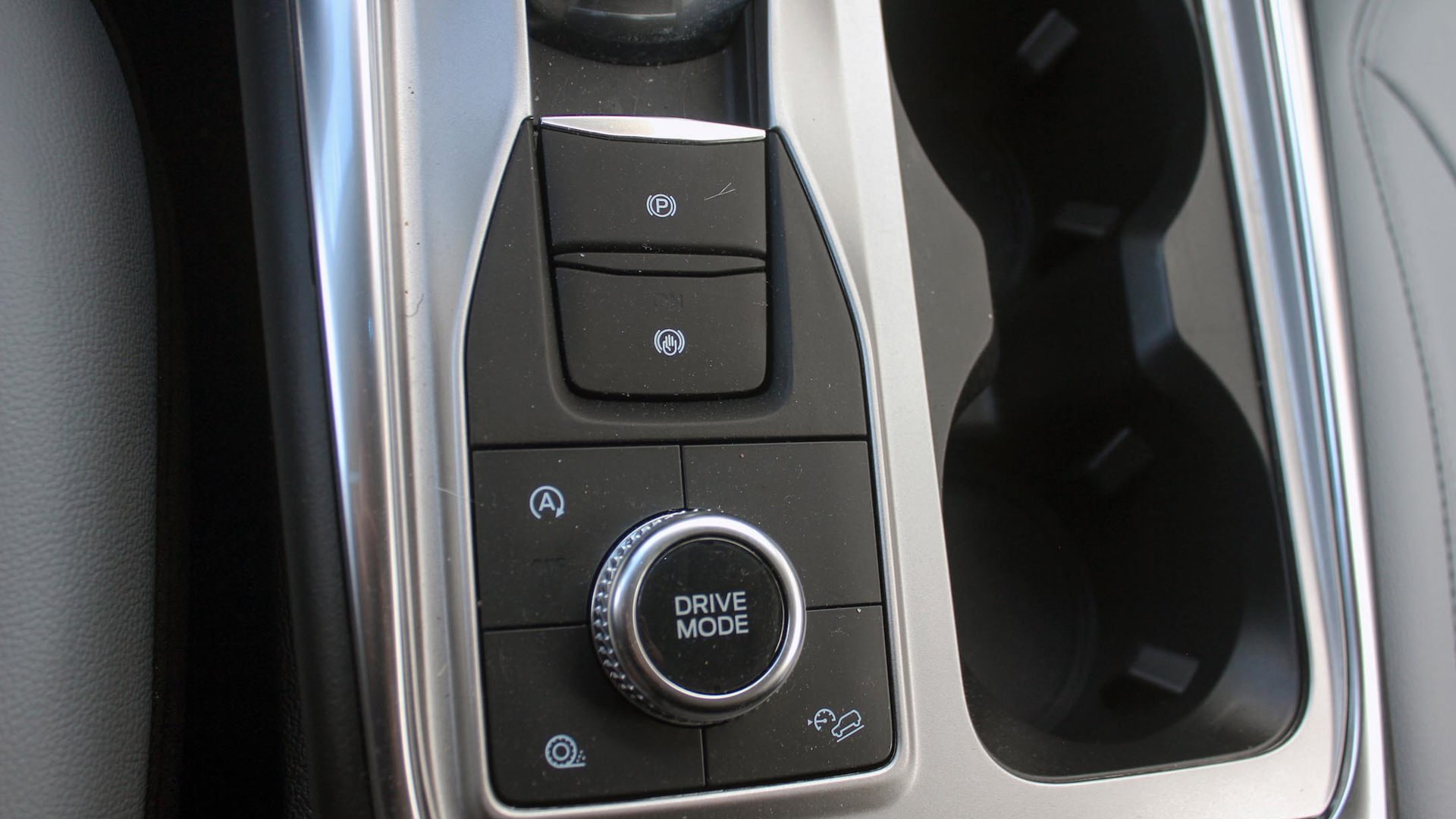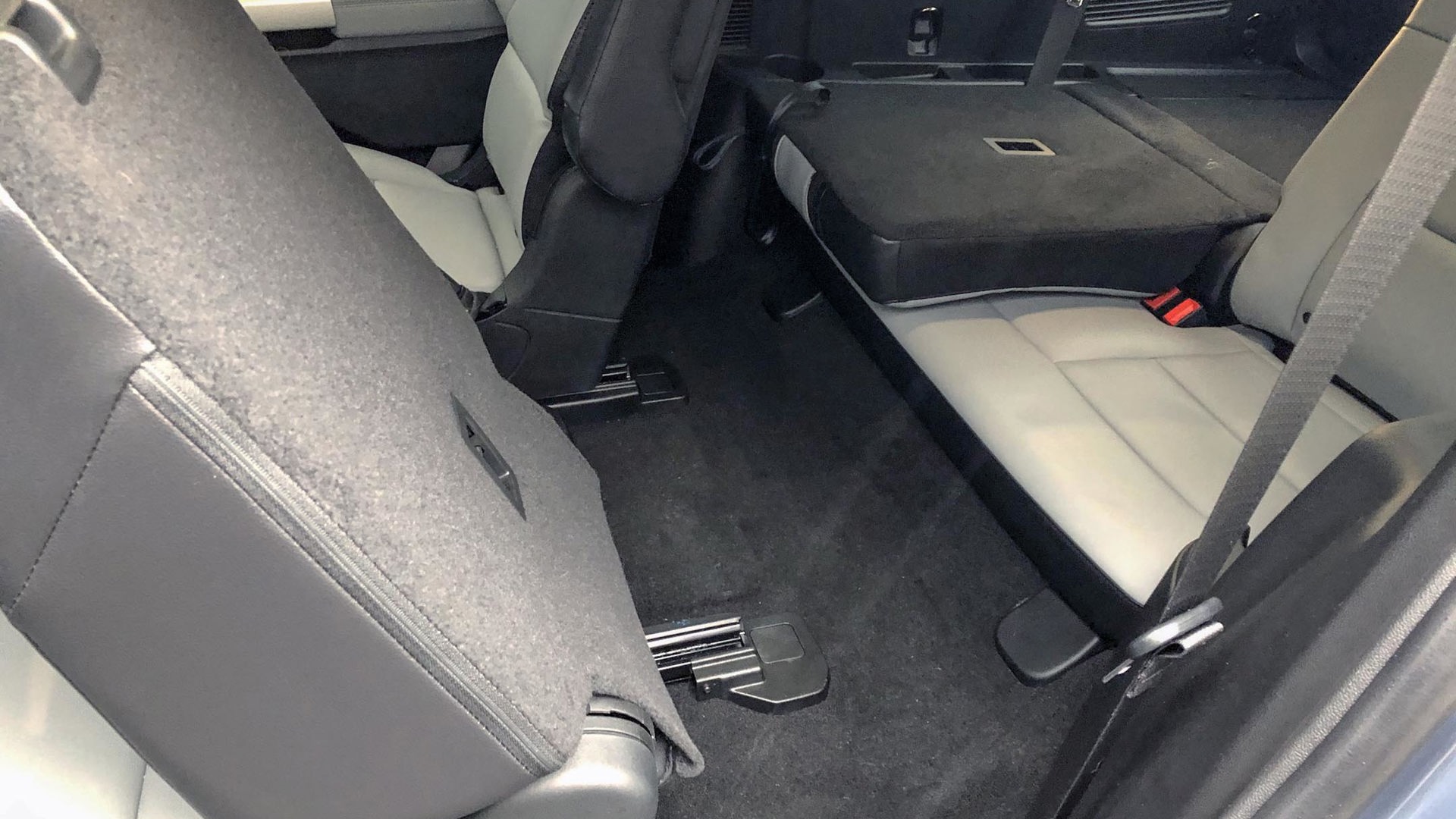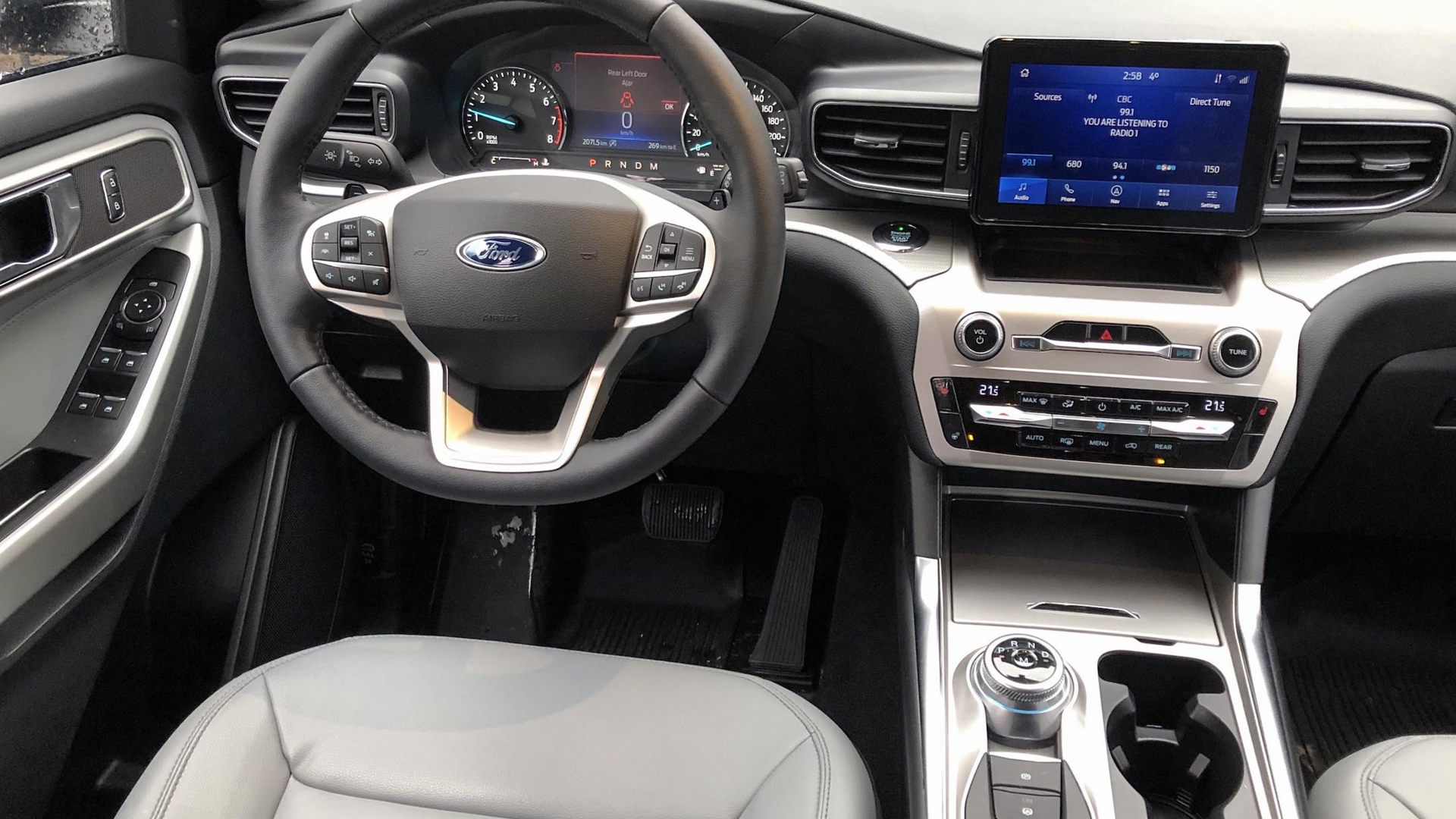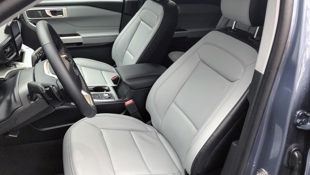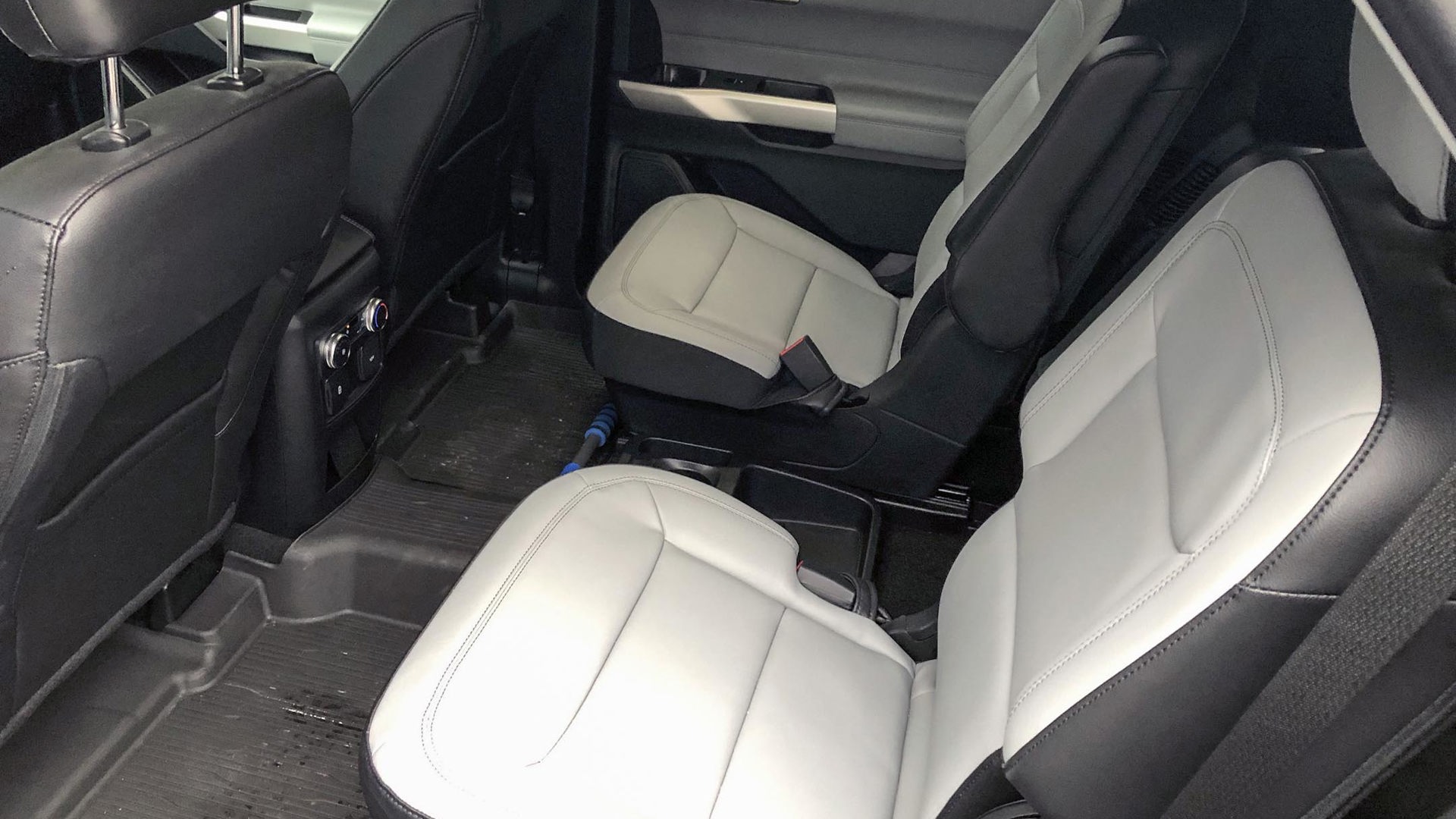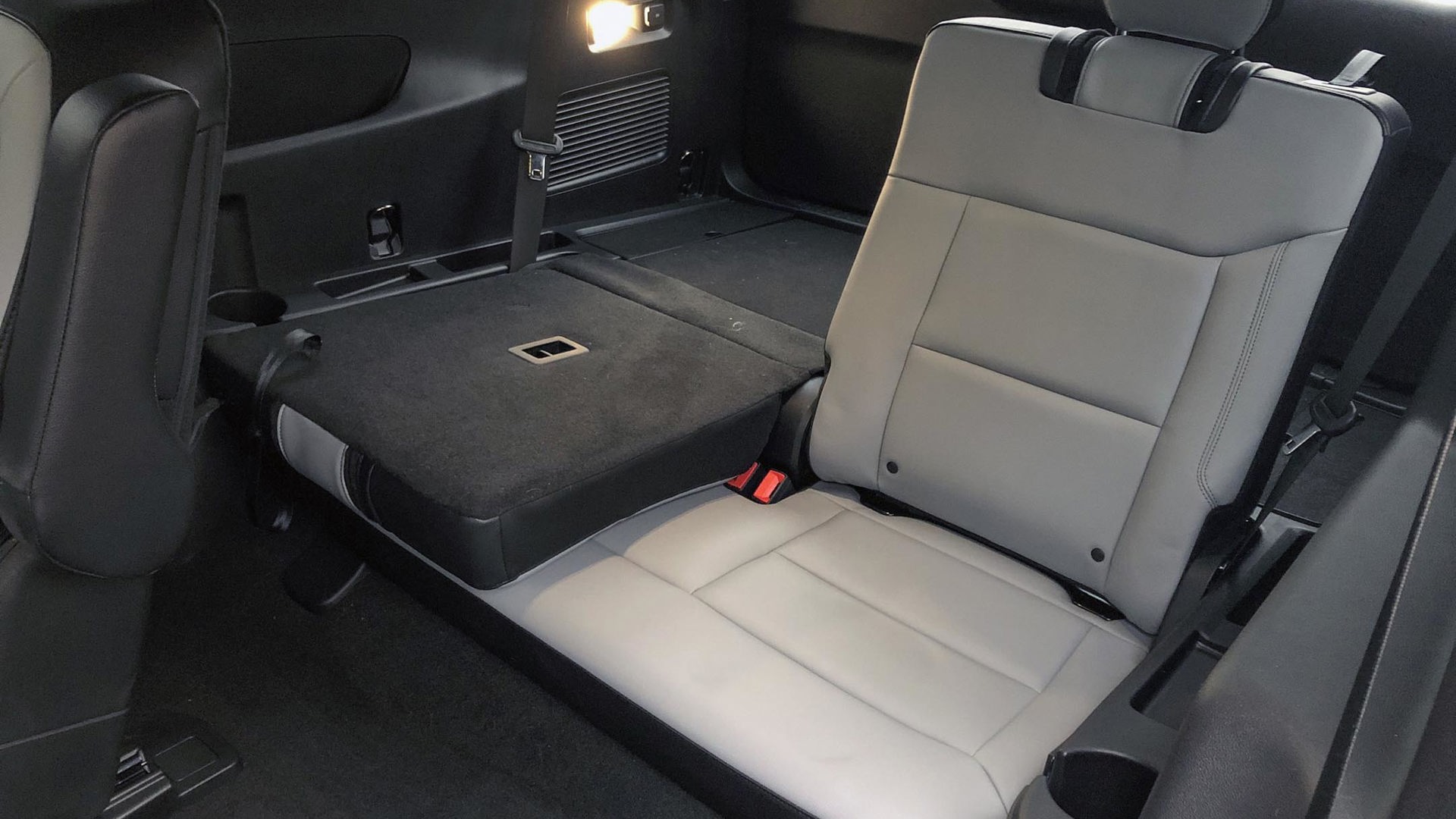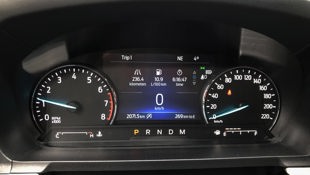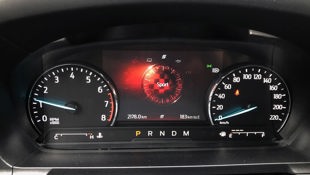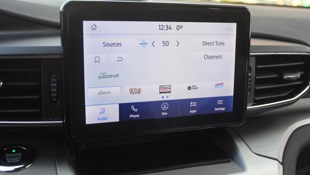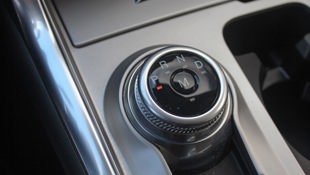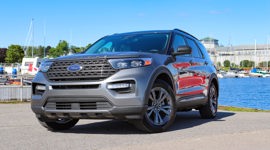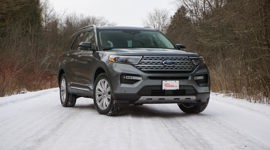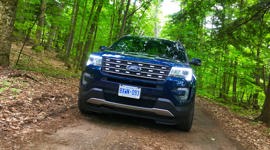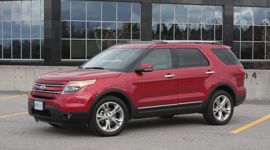 AutoTrader SCORE
AutoTrader SCORE
-
STYLING7/10
-
Safety8/10
-
PRACTICALITY8/10
-
USER-FRIENDLINESS8/10
-
FEATURES7/10
-
POWER7/10
-
COMFORT8/10
-
DRIVING FEEL8/10
-
FUEL ECONOMY8/10
-
VALUE7/10
The sixth-generation Ford Explorer leaps ahead of the old model in every respect.
The fresh platform with longitudinally mounted engine bestows improved road manners, and the redesigned interior proves to be a much nicer place to spend time. Here we test the base 2021 Ford Explorer XLT that gets down the road courtesy of a 300-hp four-cylinder engine, a 10-speed automatic transmission, and standard all-wheel drive. A sprinkling of options and packages swells this three-row SUV’s $45,549 base price to $53,199 before fees and taxes.
Styling: 7/10
As far as midsize three-row SUVs go, this new Explorer is fairly pleasing to the eye, showing a muscular stance, good proportions, and sweeping lines sculpted into its flanks that add flair and a bit of drama. All 2021 Explorers get LED signature lighting and body-coloured door handles and spoilers. Dressing up this tester is the new-for-2021 $2,000 XLT Sport Appearance package that adds 20-inch grey 10-spoke alloy wheels, grey grille and trim, lower body side clad inserts, faux skid plates, and dual chrome exhaust tips. The $450 Infinite Blue Metallic paint this tester sports is a classy hue.
Safety: 8.5/10
All 2021 Explorers come standard with a government-mandated rearview camera with built-in washer, reverse sensing system, hill descent control, post-impact braking, and a safety suite that includes automatic LED headlights with auto high-beams, blind-spot monitoring, rear cross-traffic alert, lane-keeping system, and forward automatic emergency braking with pedestrian detection. Indeed, that pretty much covers all the bases. This tester added an upgrade package that includes adaptive cruise control, lane-centring, traffic sign recognition, and evasive steering assist. At $1,000, it’s excellent value.
Outward visibility is improved over the outgoing model, and if you include better agility as a safety feature, this redesigned Explorer delivers on that front, too.
Practicality: 8/10
The fact that the Explorer is rated as a midsize entry illustrates how the footprints of our SUVs are ever expanding. This is a big vehicle, and with the third row and standard second-row captain’s chairs folded flat, it will swallow 2,132 L of whatever you want to throw in there. Probably of more importance to most buyers will be the generous day-to-day capacity of 1,264 L found behind the second row when the manually operated third-row perches are tucked away. Standard kit with this base Explorer is a power tailgate and roof rails.
Up front we see plenty of useful storage, and second-row passengers have access to two USB ports. The captain’s chairs have a one-touch manual slide/fold function for rear-seat access, but getting back there is no picnic as one has to negotiate the prominent wheel wells. Raising the third-row seatbacks must be done from the hatch area as well.
The $600 tow package bestows a frame-mounted hitch, trailer connectors, and upgraded cooling equipment. This feature also expands the blind-spot warning system to cover the trailer. Equipped as such, this turbocharged 2.3L tester is tow rated to 2,404 kg (5,300 lb).
User Friendliness: 8.5/10
The 2021 Explorer gets high marks for logical ergonomics and easy familiarity. An eight-inch touchscreen interface is well laid out, featuring a user-friendly menu structure. The all-important radio presets are presented in a row along the bottom of the screen, and we also get proper volume and tuning knobs. The graphics are a tad bland but that doesn’t take away from their functionality.
HVAC controls are well marked and intuitive, with large glove-friendly toggles for temperature adjustment. There are also big buttons for steering-wheel and seat heating. The vehicle also sports one of the best voice-command systems out there, responding quickly and accurately to audio and navigation requests.
I like – nay, love – Ford’s rotary dial for gear selection, and it’s really one of the best ergonomic solutions to this seemingly puzzling problem that has automakers all over the map. The dial is compact, requires only a twist of the wrist, and is absolutely foolproof. Turn hard right for drive and hard left for park. No fumbling with shift wands or pesky park push-buttons.
Outward visibility is good for this class of vehicle thanks to the generous glass area and large mirrors.
Features: 7/10
The XLT’s standard safety package is quite comprehensive and includes the three biggies: blind-spot monitoring, rear cross-traffic alert, and front collision mitigation. There’s a terrain management system folded into the standard all-wheel drive, serving up seven selectable drive modes: normal, trail, deep snow/sand, slippery, sport, tow/haul, and eco, which adjust various driving parameters for optimized performance.
This base XLT model comes standard with fabric upholstery, but here the interior is trimmed in slate grey faux leather with contrasting stitching (part of the $2,000 XLT Sport Appearance pack). Overall, the cabin feels a tad low-rent for a $53,000 vehicle: lots of hard plastic, uninspired design, and questionable build quality. The Mazda CX-9 sets the standard in this department, with the Kia Telluride up there, too.
The standard six-speaker stereo is acceptable but nothing to get excited about. There’s also Apple CarPlay and Android Auto, and a Wi-Fi hotspot. Rear-seat passengers get their own climate controls and a pair of USB ports for phone charging, but no heat for their derrières. The excellent front seats are heated but have no ventilation in this trim. And I was surprised when first driving at night by how much glare was coming from the traffic that followed me. Oh. One of those old-fashioned flip-your-own rearview mirrors. How quaint.
Do I have the right to gripe about the lack of such niceties in this three-row snack bracket? Kia says yes. The Telluride SX AWD at $49,995 slaps buyers silly with real leather, heated second-row seats, ventilated front seats, upgraded audio, a 10.25-inch touchscreen and, yes, an auto-dimming rearview mirror.
Power: 7.5/10
Doing duty here is Ford’s 2.3L turbo four-cylinder engine, mated to slick 10-speed automatic transmission that is a joint venture between Ford and General Motors (GM). This is a strong engine kicking out 300 hp and 310 lb-ft of torque, and it moves this SUV out smartly once past the occasional laggy throttle response – a combination of turbo lag and waiting for the transmission to find the right gear.
Selecting sport mode does not make much difference in the way the vehicle drives. It changes the transmission mapping to hold onto gears a bit longer and the kickdown might be quicker.
Comfort: 8/10
It’s easy to fall in love with the Explorer’s front buckets: they meld supreme comfort with just the right amount of snug support. However, Ford needs to recalibrate the seat heat settings. Low is just too toasty to leave on for any length of time. This should simply be a warm glow. Additionally, the HVAC didn’t send enough heat into the cabin on the lower fan settings.
The second-row captain’s chairs are fine but not as cushy as the front, and legroom is not as generous as in many rivals. Those who find themselves back in the third row will experience hard, near-floor-level cushions and a renewed acquaintance with their kneecaps. You’ll find better third-row accommodation in the Volkswagen Atlas, Kia Telluride, or Subaru Ascent.
Ride quality is generally good in this Explorer XLT, but the 20-inch wheels that come with the $2,000 XLT Sport Appearance pack transmit a bit too much noise and impact information over rougher surfaces.
Driving Feel: 8.5/10
As noted earlier, the Explorer’s new platform vastly improves the driving experience, rising it to the top of the ranks when it comes to handling. Granted, it’s hardly a sports car, and the somewhat numb steering detracts a bit, but this sport utility’s responsiveness, poise, and reassuring stability make it one of the more pleasant of this ilk to pilot.
For those who wish to exercise their F1 fantasies while making the school run, pressing the M button that sits in the centre of the rotary shift controller calls up manual mode, wherein the transmission takes its bidding from the steering-wheel-mounted shift paddles – albeit quite lazily.
Fuel Economy: 8.5/10
Over two weeks of admittedly relaxed (and mixed) driving, this XLT tester returned an impressive 10.6 L/100 km. Official fuel figures are 11.7 L/100 km city, 8.6 highway, and 10.3 combined, which better rivals Kia Telluride, Honda Pilot, Chevrolet Traverse, VW Atlas, and Mazda CX-9. It runs on regular-grade fuel, too.
Value: 7/10
The Explorer XLT at $44,549 represents decent value when factoring in its strong drivetrain, standard safety kit, and fine driving dynamics. However, recent pressure from Hyundai (Palisade) and Kia (Telluride) is not good news for any automaker in this segment. Those two offer more style, more equipment, better build quality, and a much more comprehensive warranty for similar or less money. The most-desirable Explorer models live higher up the food chain: the 400-hp hot-rod ST version ($58,399) and the ritzy Platinum ($64,649) top the list.
The Verdict
If you’re a Ford person who has embraced the Explorer in the past – and Ford has sold a gazillion of these SUVs – one drive in this sixth-gen iteration will have you signing on the dotted line pronto. It’s a big step forward, transforming the Explorer from a dull driving and awkwardly packaged offering to one that deserves serious consideration.
| Engine Displacement | 2.3L |
|---|---|
| Engine Cylinders | Turbo I4 |
| Peak Horsepower | 300 hp @ 5,500 rpm |
| Peak Torque | 310 lb-ft @ 3,500 rpm |
| Fuel Economy | 11.7 / 8.6 / 10.3 L/100 km cty/hwy/cmb |
| Cargo Space | 528 / 1,264 / 2,132 L behind 3rd/2nd/1st row |
| Model Tested | 2021 Ford Explorer XLT |
| Base Price | $45,549 |
| A/C Tax | $100 |
| Destination Fee | $1,900 |
| Price as Tested | $55,099 |
|
Optional Equipment
$7,550 – Equipment Group 202A (remote start, 8-way powered passenger seat, Active-X seating material, heated steering wheel, front side acoustic laminate windows), $1,500; Infinite Blue metallic paint, $450; floor liners/carpet mats, $250; twin-panel moonroof, $1,750; trailer tow package, $600; Ford Co-Pilot360 Assist+ (navigation with voice activation, adaptive cruise control, lane centering, speed sign recognition, evasive steering assist), $1,000; XLT Sport Appearance Package (20-inch carbonized-grey 10-spoke alloys, carbonized-grey grill and trim, lower body side clad insert, skid plates, dual chrome exhaust tips, instrument panel appliques, Light Slate seats, unique upholstery stitching and door panels), $2,000
|
|
